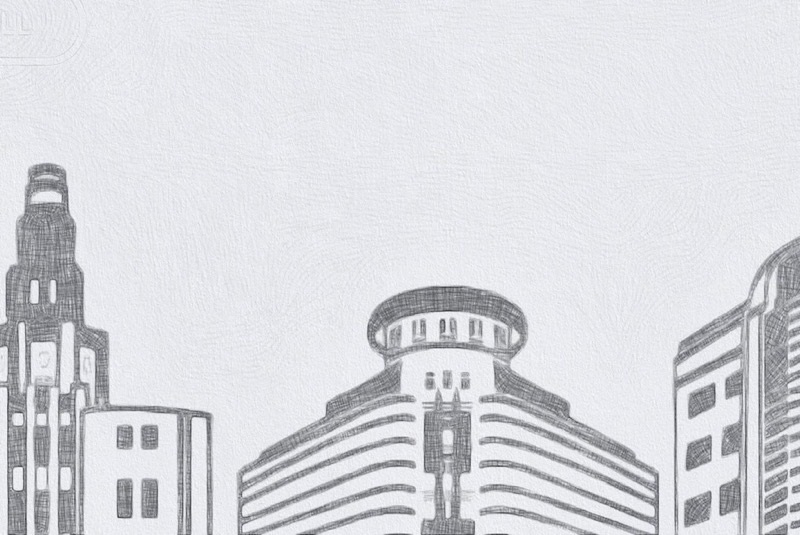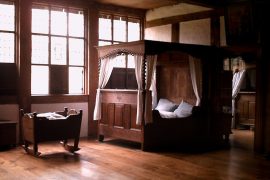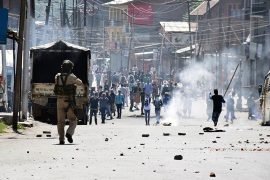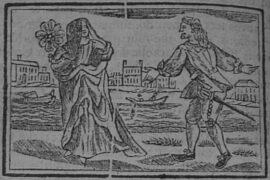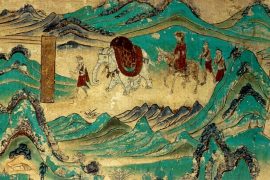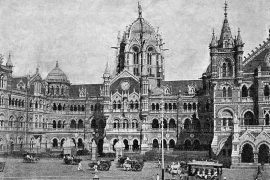If you roam around the streets of South Bombay, you will see many old buildings that stood the test of time. These are not simply buildings but delightful architectural structures. They may seem a little bit rusty, but they add beauty to the landscape of South Bombay. One thing that brings these tall buildings together is their style of architecture.
In 1930s Bombay, a fever called Art Deco took over. It is an architectural style that can be seen clearly in the windows of some of the old buildings on Bombay roads. If these windows are beautifully geometrical yet minimalistic in their design, have strong lines and consist of striking material, then it is likely that the structure is testimony to the Art Deco fever.
Art Deco was not an art style that erupted over time. It was the result of a well-thought-out movement, preceded by the Art Noveau movement. The style of Art Noveau was also geometrical but not minimalistic. It was influenced by Symbolism, Japanese Art, and the Arts and Crafts Movement before the First World War.
Art Noveau can be found in structures that were built in the 20s. Making an Art Noveau would, however, require a lot of money and effort due to the details involved. It was a changing, unsettling world. The Art people looked at wasn’t supposed to be equally unsettling but somewhat calming. That is how Art Deco came up.
By the 1920s, Art Deco became mainstream in foreign lands. The emphasis in both Art Noveau and Art Deco was thick lines that would catch attention. But where did the name Art Deco come from?
In 1925, a show was held in Paris called Exposition Internationale des Arts Decoratifs Industrielset Modernes. An organisation named the La Societe des Artiste Decorateurs held the show; the first Art Deco style was seen at that show. It was a little later that the style picked up, i.e. in the late 20s and through the 30s.
During the First World War, Bombay changed from Victorian to modern architecture. This marked shift was defined by Art Deco. Indian architects were more than familiar with European architectural design frames, including the Bauhaus style and the works of Frank Lloyd Wright.
From 1929 to 1937, America was suffering because of the Great Depression and its after-effects. During that time, India, especially Bombay, went through an architectural shift. There was a rise in the number of buildings constructed. Art Deco came to Bombay in this opportune era.
The tourism industry rose high between the two wars. People from Europe came to Bombay to experience the high-class culture, with artistic grand hotels, theatres and music like opera and jazz. Upper-class Indians started to embrace the Western culture, as well. This added to the value of new constructions, such as hotels, opera houses, and theatres.
All of these structures had the beauty of Art Deco architecture in them. In 1937, India had its first architecture exhibition called the Ideal Home Exhibition; the popularity of Art Deco was boosted through that exhibition.
The fascination of the West with Art Deco weaned after the Second World War. It was seen as too flashy for the wartime sentiments. Later, it went out of style. But in Bombay, its popularity did not decline until the 50s. Some examples of Art Deco architecture are Dhanraj Mahal, Shivshanti Bhuvan, Eros cinema, and MotiMahal.
Some of the architecture is a mix of the modern and the Swadeshi. The idea that Indian culture should not be forgotten was entrenched in the minds of Indians back in the 1920s. And some architecture of the time reflects this.
The New India Assurance building is a stellar illustration. It stands tall with two sculptures looking like working-class Indians of the time standing on either side of the entrance as guards. The work, a brainchild of eminent architect N.G Pansare, was commissioned by Sir Dorabji Tata. Pansare is also credited for the Shivaji Maharaj statue in Shivaji Park, Dadar.
Other examples of Art Deco with a Swadeshi twist are Western India House, Warden House, United India Insurance, and Laxmi Insurance Company, which has a statue of goddess Laxmi atop the structure.
All of these buildings have one thing in common apart from being carved in Art Deco style – they are all insurance companies. At the time, the marriage between Swadeshi and Art Deco was known as Swadeshi Moderne.
One of the most prominent lovers of Art Deco was a man named G.B Mhatre. All of his works are spread throughout Bombay. Some are SwadeshiModerne, and some are Art Deco. Mhatre was influenced by Claude Batley, under whom he studied at the J.J. School of Arts.
One of his works includes the Windcliffe in Peddar Road. It looks to the sky with umbrella-like roofs for its windows and clean, geometrical shape. The Soona Mahal in Marine Drive, one of the most celebrated Art Deco buildings, is also the magnum opus of G.B. Mhatre. The roof of the entrance side looks like a toppled pizza crust, a foretelling, perhaps, of the Pizza eatery that was not yet there in the building when it was first conceptualised.
Some of his other works include the Datta temple in Prabhadevi, Shangri La in Cumbala Hill, and the Bombay Life Building in Udipi, which borrows from not only Art Deco but also Islamic architecture.
Mhatre was known as the ‘shadow architect.’ A term coined by Claude Batley, it referred to him never signing the papers of his structures. Today, many of his buildings overlook the streets of Bombay.
The journey of Art Deco, from its beginning after the First World War to its decline after the Second, is short-lived. But it has given Mumbai some of its most revered architecture, which is loved and admired even today.
-30-
Copyright©Madras Courier, All Rights Reserved. You may share using our article tools. Please don't cut articles from madrascourier.com and redistribute by email, post to the web, mobile phone or social media.Please send in your feed back and comments to editor@madrascourier.com

